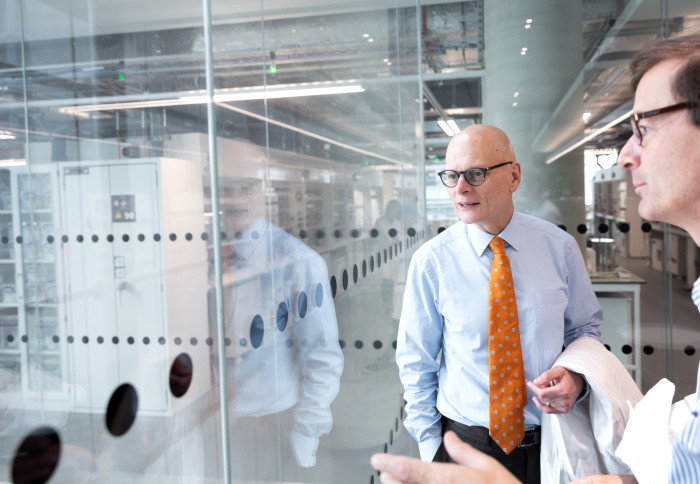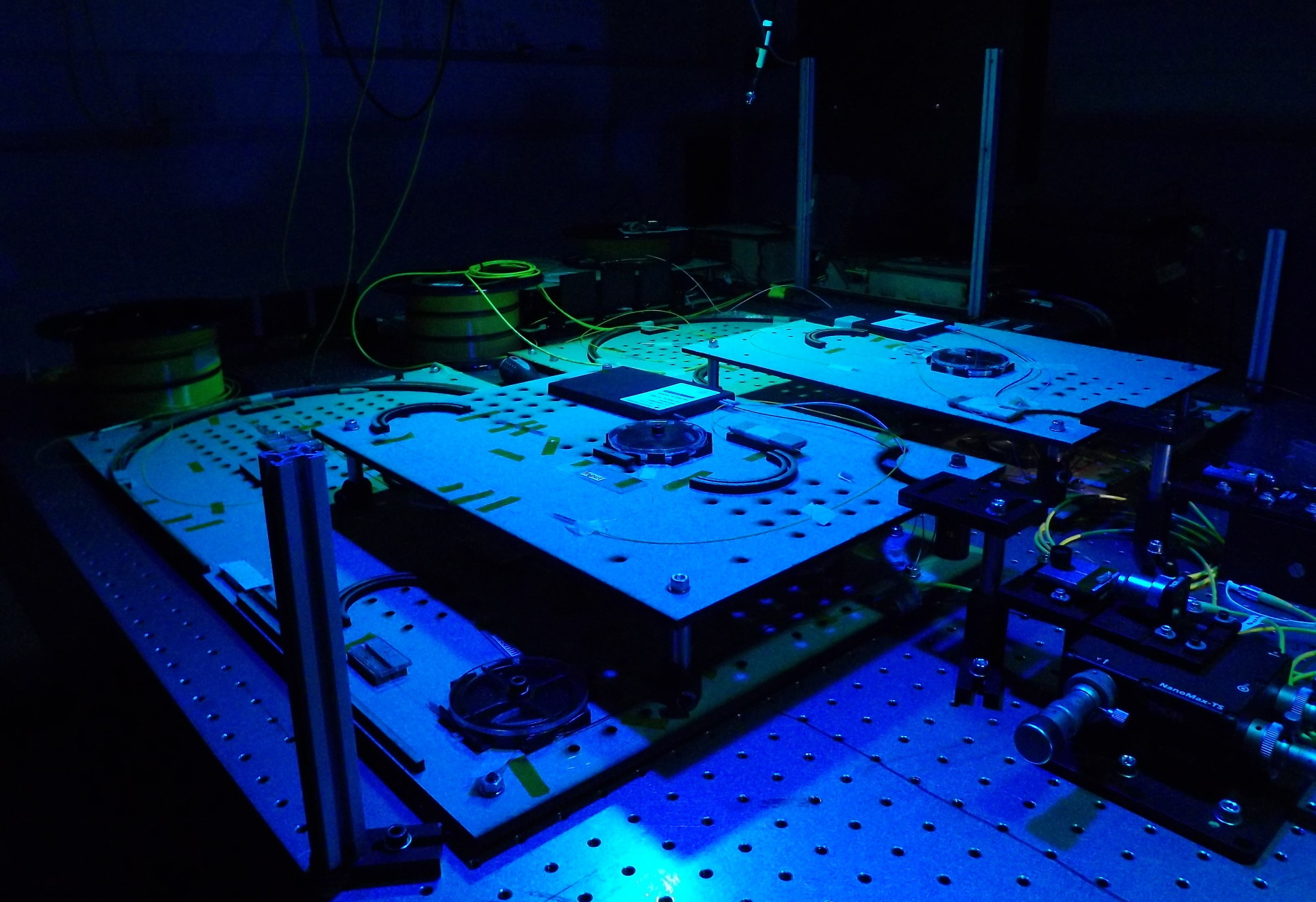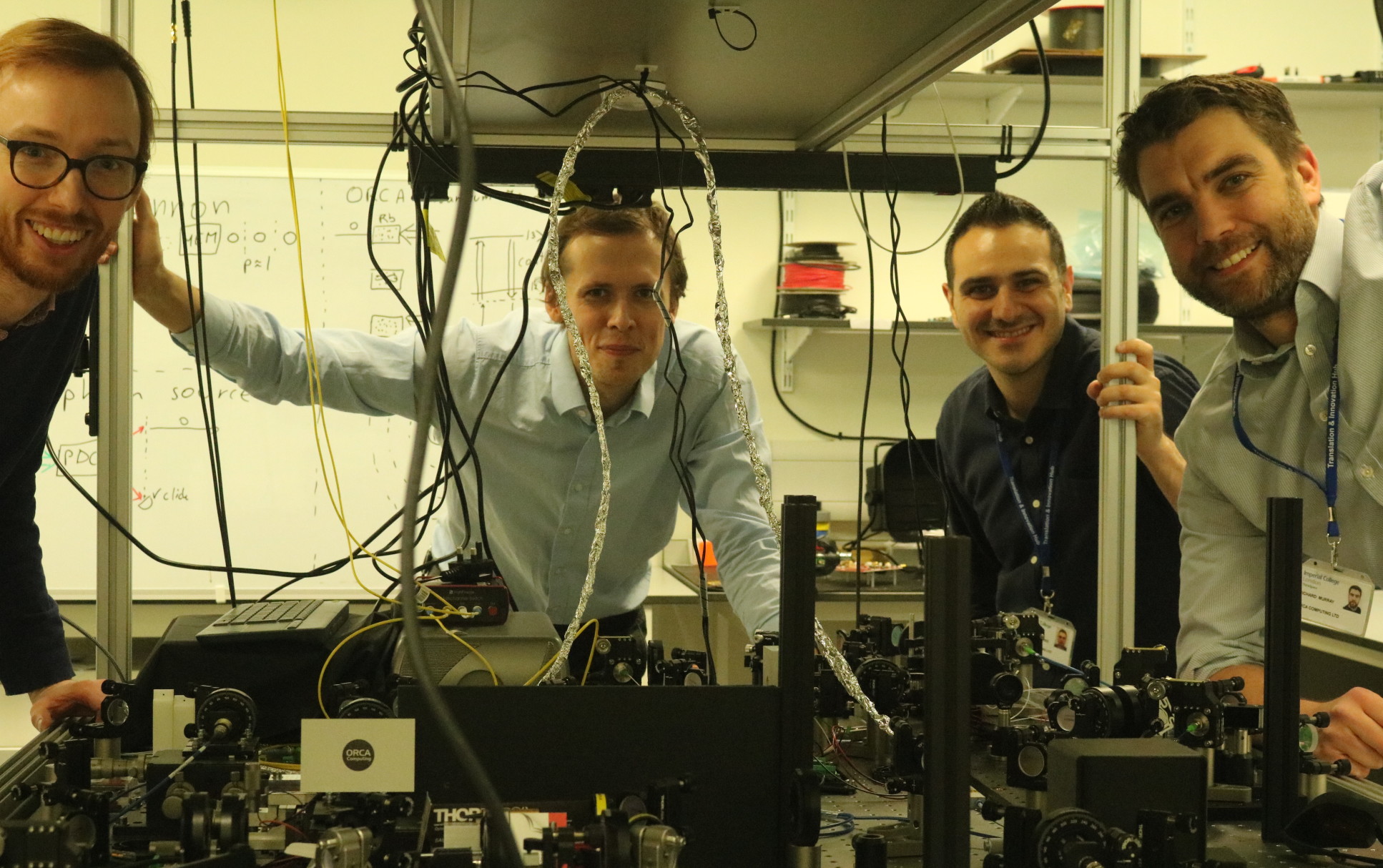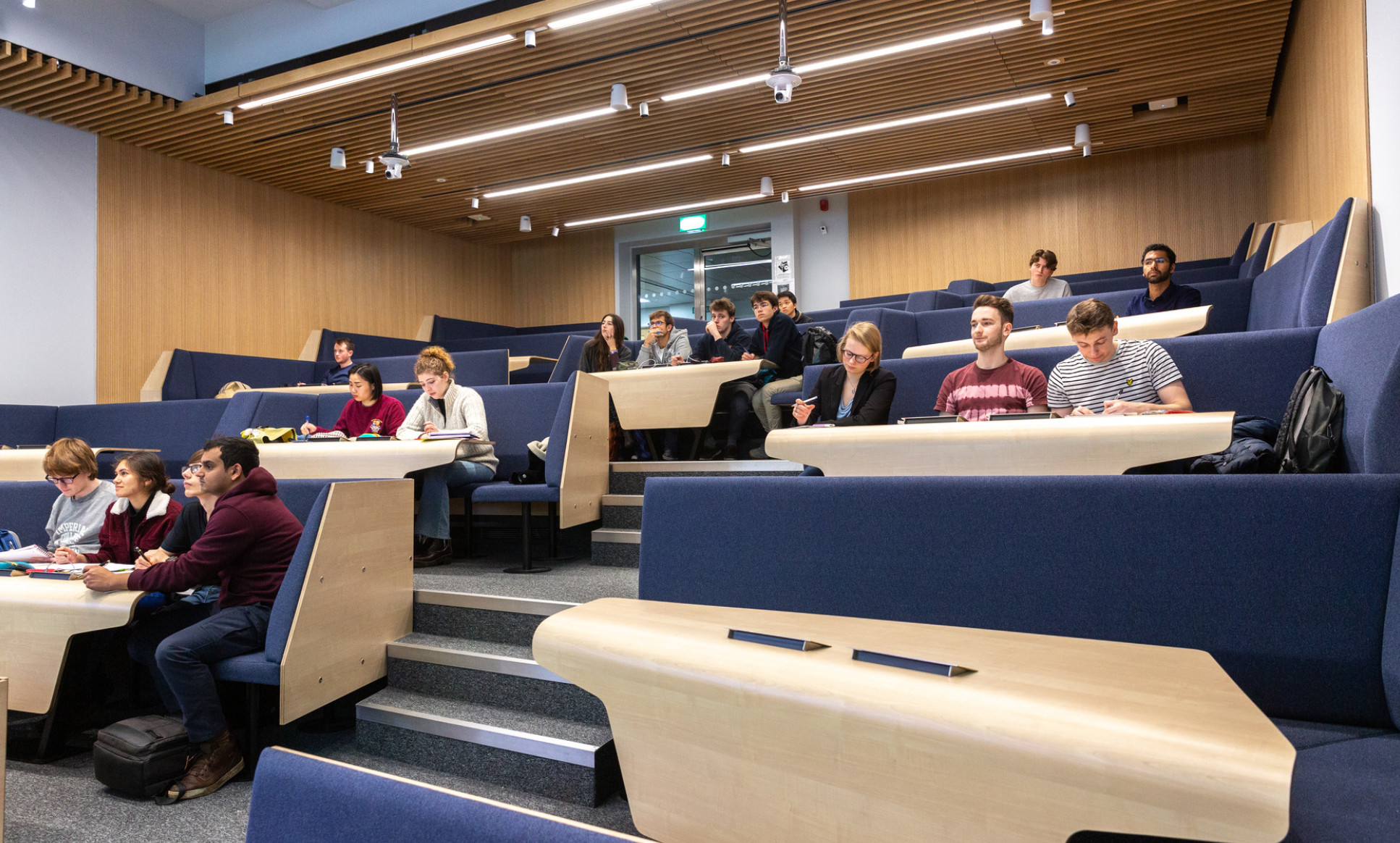The quantum computing trailblazers powered by Imperial expertise

ORCA Computing was co-founded by Imperial's Provost, Professor Ian Walmsley
Quantum tech startup ORCA Computing is using links with Imperial to gain an edge in the race to create the world’s first widely used quantum computer.
ORCA Computing, a company co-founded by Imperial’s Provost Professor Ian Walmsley based on EPSRC- and ERC-funded research he carried out when he was a professor at Oxford University, aims to compete in quantum computing with giants like IBM and Google. Located at Imperial’s White City research and innovation campus – and with outposts in Canada, Poland and the USA – it is making use of facilities, technological innovations and a recruitment pipeline from Imperial.
The support of Imperial and Oxford is helping us create technology that could help lead a quantum computing revolution. Professor Ian Walmsley Imperial's Provost and co-founder of ORCA Computing
Professor Walmsley said: “With ORCA Computing, we are building a technology platform that could help lead a quantum computing revolution. As a business, we can make a major impact on the world. But the intellectual property and the resources provided by Imperial and Oxford University are crucial in supporting this. It has proven to be really valuable for the company to be located in a vibrant research and entrepreneurial community.”
Quantum computing

Quantum computers have the potential to revolutionise fields such cryptography and artificial intelligence by using computing power magnitudes greater than traditional computers.
Information goes in at one end and you have a bunch of really fast switches. As it’s flying through the optical fibre network, it performs quantum computing on the fly, Dr Richard Murray CEO of ORCA Computing
The power of quantum computing lies in the fact that it uses the quantum properties of matter to process information. While a traditional computer uses the bit, which is always in one of two possible states (0 or 1), quantum computers use the qubit. Using superposition – a property of quantum particles such as photons – a qubit can be in two states simultaneously. This allows quantum systems to complete certain information processing tasks in fewer steps than classical systems, an advantage that increases exponentially as you add more qubits.
Quantum computing power is expected to enable tasks in fields such as medicines discovery, logistics, materials research and cryptography that would be impossible with ordinary computers. While quantum computers are already commercially available, they are currently noisy and hard to scale, meaning further development is required to allow them to deliver on their potential. “The race is on to get to the one million qubits that people need to run quantum software,” says ORCA Computing’s CEO, Dr Richard Murray, a quantum technology expert who co-founded the company with Professor Walmsley, Dr Cristina Escoda and Dr Josh Nunn of the University of Bath. “We’re in this race against the big ones: Google, IBM, Amazon.”
Optical fibres
 Quantum computing is a broad field comprised of many different approaches. The main thing that distinguishes ORCA Computing’s approach is that it uses optical fibres. “Information goes in at one end and you have a bunch of really fast switches that process the information as it’s passing through. As it’s flying through the optical fibre network, we’re performing very quick switching and memory and measurement in a way that performs quantum computing on the fly,” explains Dr Murray.
Quantum computing is a broad field comprised of many different approaches. The main thing that distinguishes ORCA Computing’s approach is that it uses optical fibres. “Information goes in at one end and you have a bunch of really fast switches that process the information as it’s passing through. As it’s flying through the optical fibre network, we’re performing very quick switching and memory and measurement in a way that performs quantum computing on the fly,” explains Dr Murray.
We’re in this race against the big ones: Google, IBM, Amazon. Dr Richard Murray CEO of ORCA Computing
A key advantage of the technology is that optical fibres are already available off-the-shelf, making a quantum computer potentially much easier to assemble. “We’re quite confident that we’ve got a technology that is scalable enough to compete with those others, and at a fraction of the cost,” he says.
An agile approach

One important potential application of quantum computing is machine learning. “Our philosophy is to never lose sight of how these systems will be useful and try not to leave that until the end,” says Dr Murray. “We’re translating lasers and beam splitters into problems in machine learning. We’ve found that we can translate a physical beam splitter in our system to nodes in a machine learning system, and if you have many beam splitters the physical system can be used to represent and solve some complex machine learning problems.”
The CEO hopes that the company’s agile approach will help it compete against the big players. Describing the innovation process, he says: “It’s like building on quicksand. You get one team to build one thing based on assumptions from another team. But things on the one side, say the hardware side, may become different or better, which will change the other, machine learning side. Over time your assumptions become less hypothetical and more real. This is the language of startups.”
White City HQ

Dr Murray says that the company was drawn to London not merely because of Professor Walmsley’s move to Imperial but out of a desire to be located in a major city.
There are loads of co-working spaces in London, they all have a cool beanbag vibe to them, but few of them have a goods lift, or a compressed air supply. Dr Richard Murray CEO of ORCA Computing
The company has been headquartered since May 2020 in the Translation & Innovation Hub (I-HUB) on Imperial’s new White City research and innovation campus. The campus was opened to offer new and growing deep-science companies the opportunity to locate near to one another and in close proximity to the academic expertise and resources of Imperial. One advantage Dr Murray also singles out is the physical resources offered by the I-HUB.
“We spent about three months looking at warehouses and others sorts of places we could rent. We were looking at single-glazed ex-carpet factories in Islington and the technical team were saying ‘it sorts of works’ but there’s a big risk the temperature stability won’t be right, and that was too big a risk to take,” he says.
“There are also loads of co-working spaces in London, they all have a cool beanbag vibe to them, but few of them have a goods lift, or a compressed air supply. You ask the people, ‘We need to get a 400kg optical table into this room, where’s the nearest lift?’ and they have no idea what you’re talking about. In the first days of the startup where you’re just trying to make things easy it’s nice to come in and know that the lab space is going to work, straight out of the box.”
“Only the I-HUB stood out as somewhere we could get really easy access to the top-class laboratory space we needed. We’re only a year old, within a few months of the company being formed, we had our first results. It was like all systems go. And that’s how you have to be a startup. The whole world is not waiting around for a quantum computer, and neither should we.”
Business meets academia
ORCA Computing is working with Imperial academics researching closely linked approaches to quantum computing, not only Professor Walmsley but also Dr Steve Kolthammer, Professor Myungshik Kim and Dr Michael Vanner, all in the Department of Physics. The Department has recently made a significant investment in upgrading lab spaces used by the teams.
Commenting on the relationship between academic and commercial R&D, Dr Murray says that the two activities have differing remits but have potential to usefully complement each other. “We are less able to spend resources looking at novel schemes for long term memories, things that are at an earlier stage and may lead to nothing, whereas that can be the bread and butter of Ian’s research as an academic.”
It’s like building on quicksand. You get one team to build one thing based on assumptions from another team. But things on one side may become different. Over time your assumptions become less hypothetical. This is the language of startups. Dr Richard Murray CEO of ORCA Computing
The company built its first product, the time-bin interferometer, using principles identified by Dr Kolthammer and Professors Walmsley and Kim. They are also currently using a technology developed by Dr Kolthammer and his group from Imperial.
As the company grows, Dr Murray says the company hopes to continue collaborating with academic researchers. “The model I see in the future is that we communicate what we’re up to, our long-term research goals, and maybe academics share theirs with us. We then have choices in how we might support them. One model is joining collaborative research projects, where we dedicate a part of our funding to the academic to do work that feeds into our roadmap. We certainly support them with letters of support – we can articulate the importance of the research well because it actually matters to us. As and when new concepts pop out of the university research base, we then license those into the company.”
The company is also providing technology to Imperial, including a laser system that is being used in a research project led by Dr Kolthammer and supported by the EPSRC Quantum Computing and Simulation Hub.
Talent pipeline

One of the most important points of contact between ORCA Computing and Imperial is in student recruitment. The company has already hired four Imperial graduates and plans to recruit several more in the next few months. Its newest recruit, who will join in May 2021, is Dr Alex Neville, a former postdoctoral researcher from Dr Kolthammer’s group.
Dr Neville has already carried out a six-month secondment at the company, funded by Imperial using an Impact Acceleration Account funded by the EPSRC. “When we recruit people from the College, they hit the ground running. Alex’s secondment was a great chance to understand each other’s work really well and get to know each other so he’s now comfortable about joining ORCA. Once he’s joined it will continue to further the relationship we’ve had with Steve,” says Dr Murray.
Entrepreneurial ecosystem
Dr Murray says the company benefits from being part of Imperial’s entrepreneurial ecosystem. “The clustering and ecosystem effect is one reason why we’re also in White City. It does matter to have a nice environment where you can bump into people in the corridor. And it helps with the recruitment and investor side of things. You really don’t want your building to be a burnt-out carpet factory.”
Article supporters
Article text (excluding photos or graphics) © Imperial College London.
Photos and graphics subject to third party copyright used with permission or © Imperial College London.
Reporter
David Silverman
Communications Division